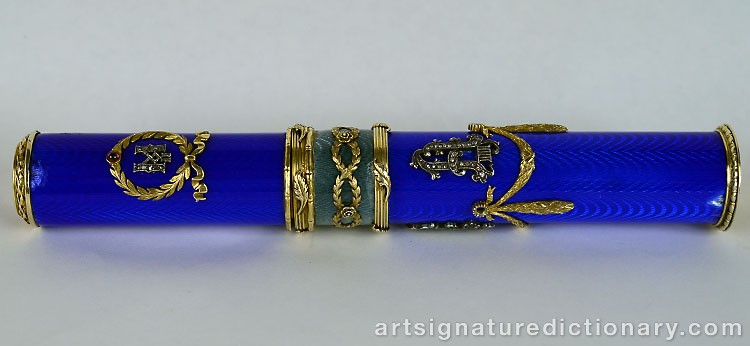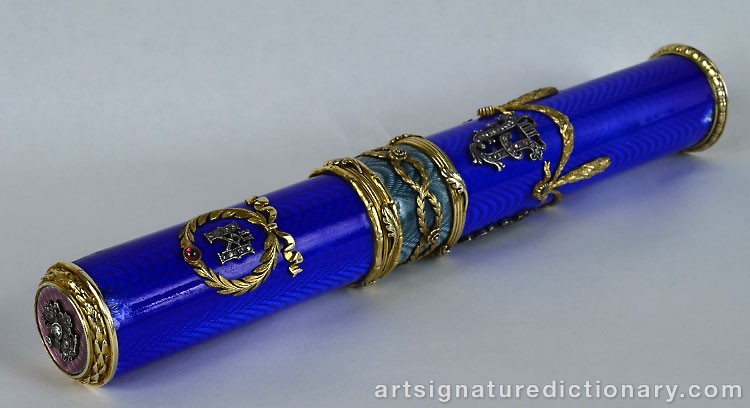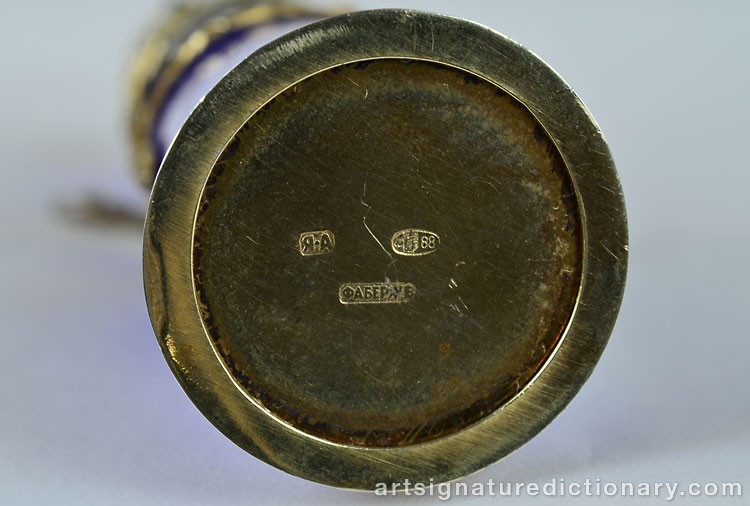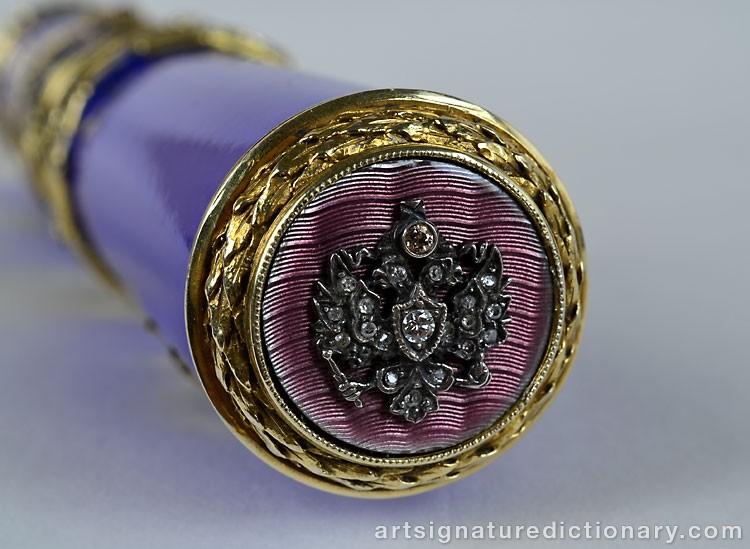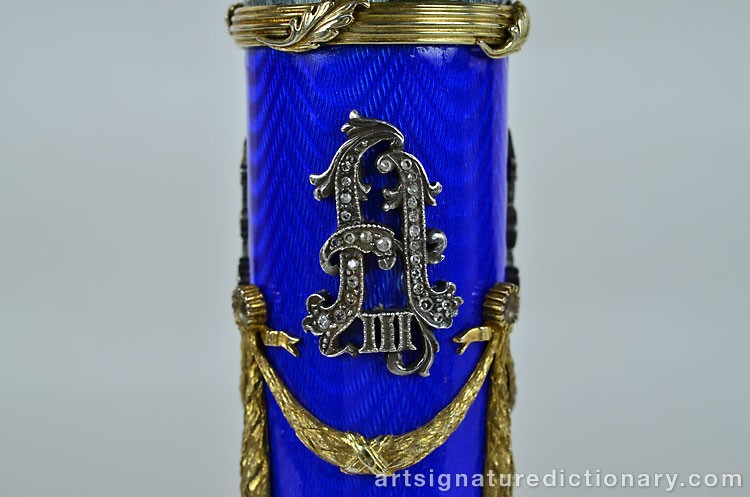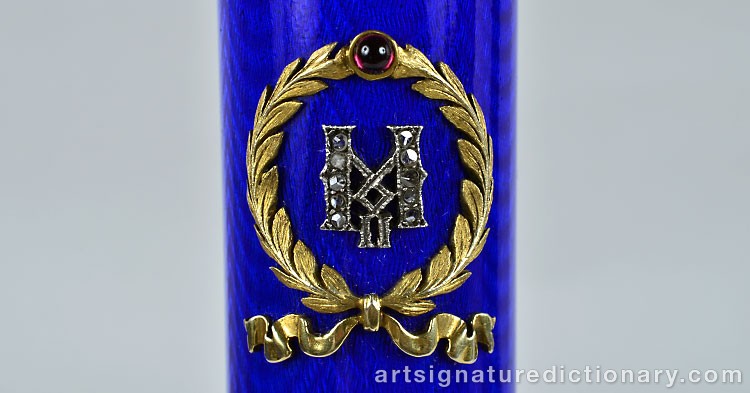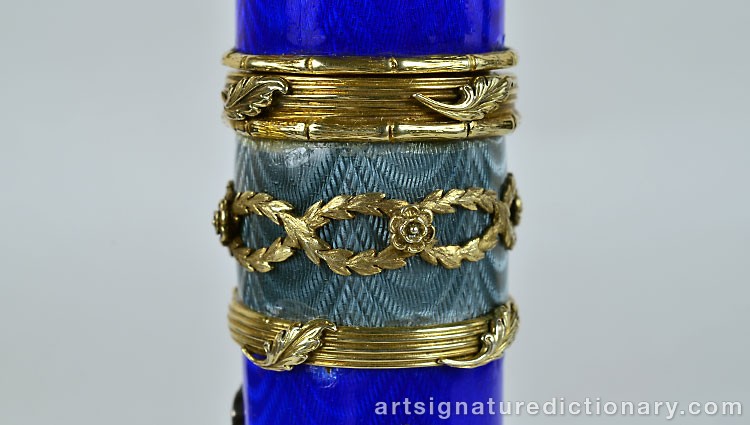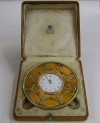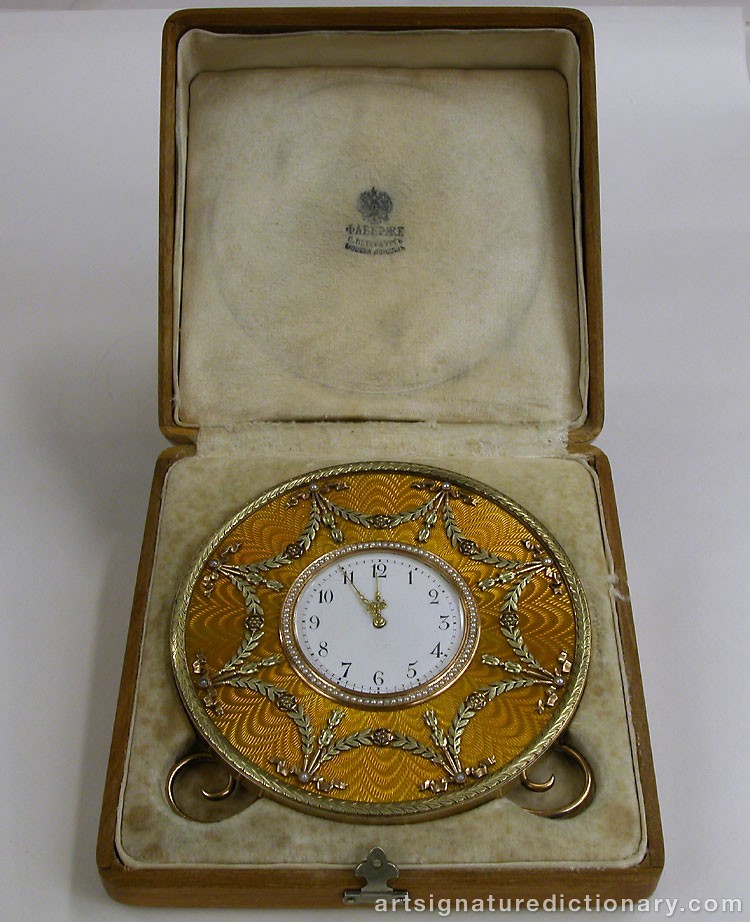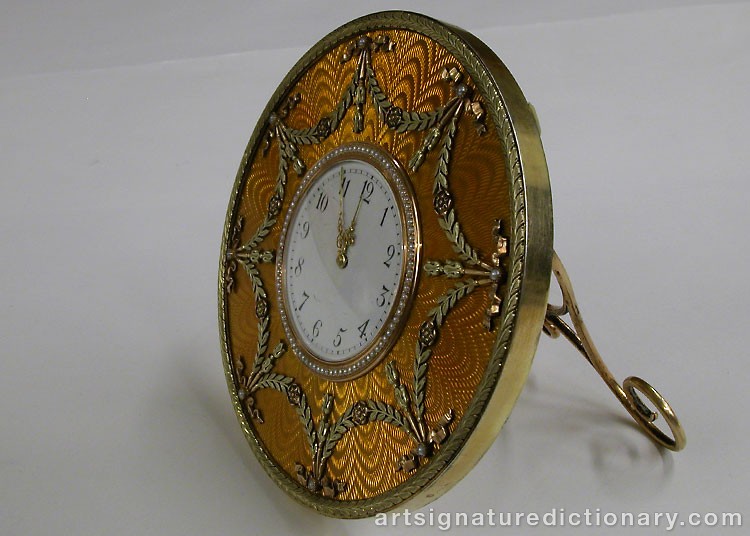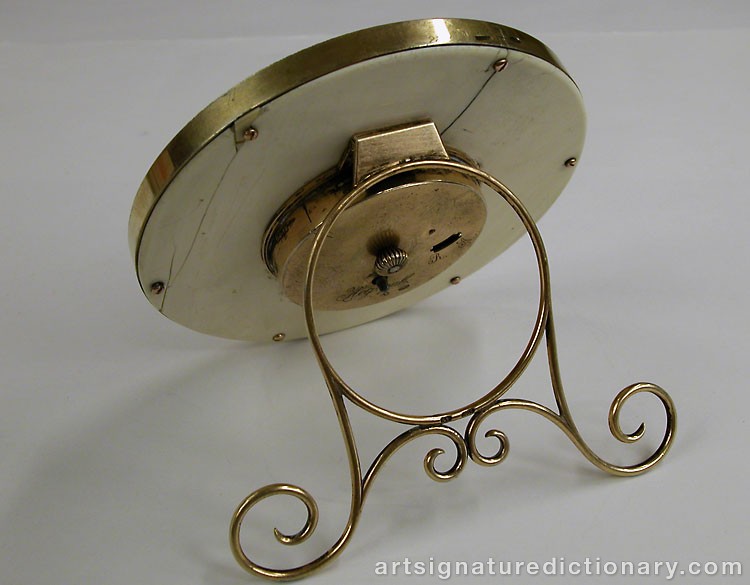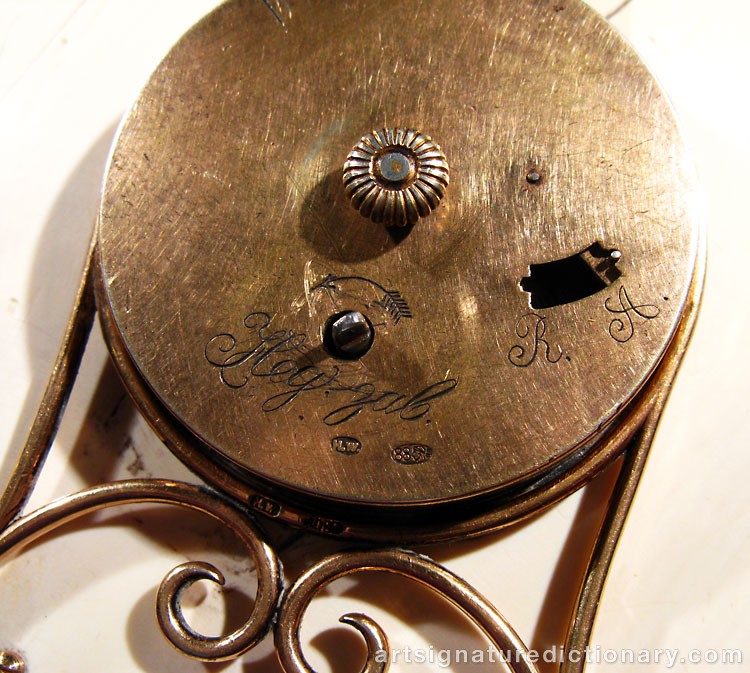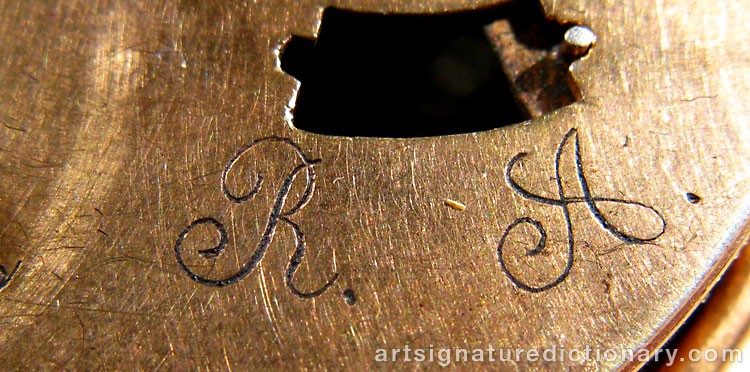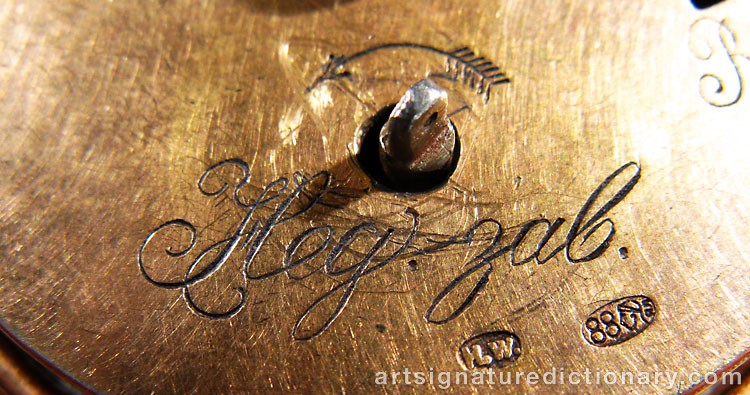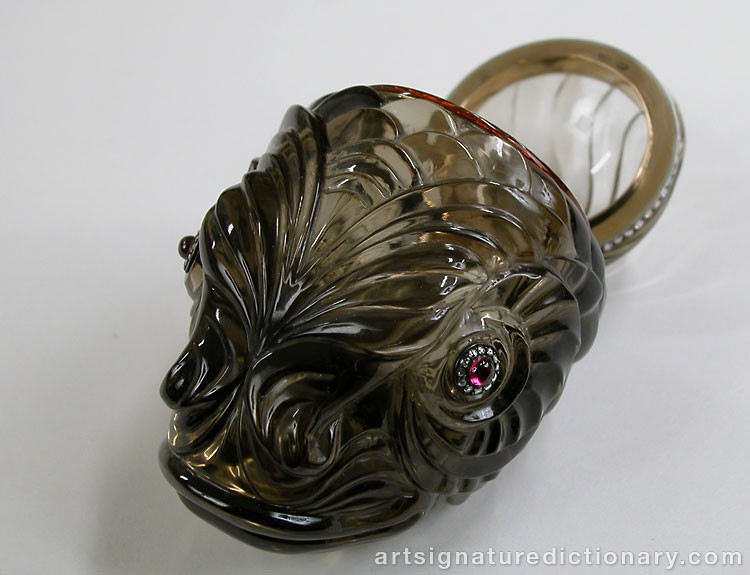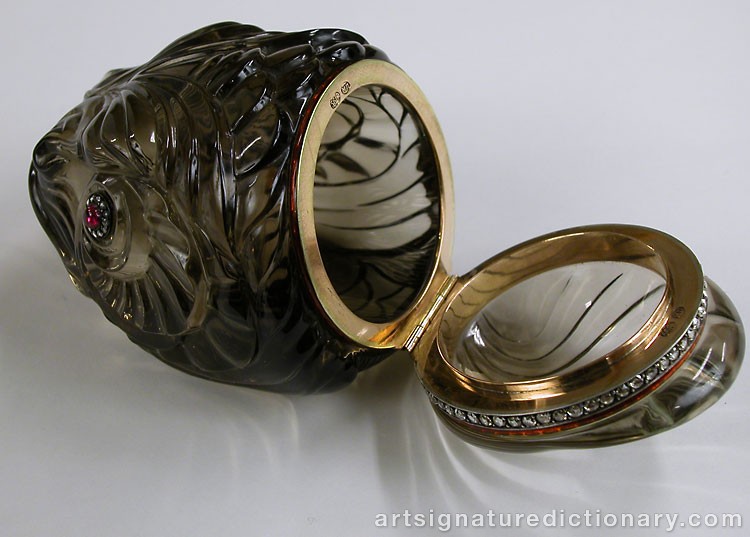
Carl FABERGÉ
1846–1920, Russia/Switzerland

Signature proven counterfeit
Enamelled case with counterfeit stamps in order to mislead possible buyers in the belief that it is an authentic item created by the house Carl Fabergé. The object was for sale at an auction house in Stockholm, Sweden, in spring 2011 as a "Cigar case." The case has several stamps indicating the Artist (Hjalmar Armfeldt 1873-1916), Factory (house Fabergé), as well as stamps for manufacturing location (St. Petersburg) and dating (1908 to 1917). Silver content (88 Zolotniki) is set to 917,5. All stamps are forged. The subject has been examined by experts who found that the enamel work is of poor quality. So bad that it would never be approved by Carl Fabergé. Enamel color mixing is also incorrect. It was also noted that the object is brand new, about 30 years old. At the hearing stated submitter that he bought the case several years earlier at auction. The District Court's assessment: The object has been examined by experts and are not manufactured or stamped by the house Carl Fabergé. The object is a forgery and will be forfeited.
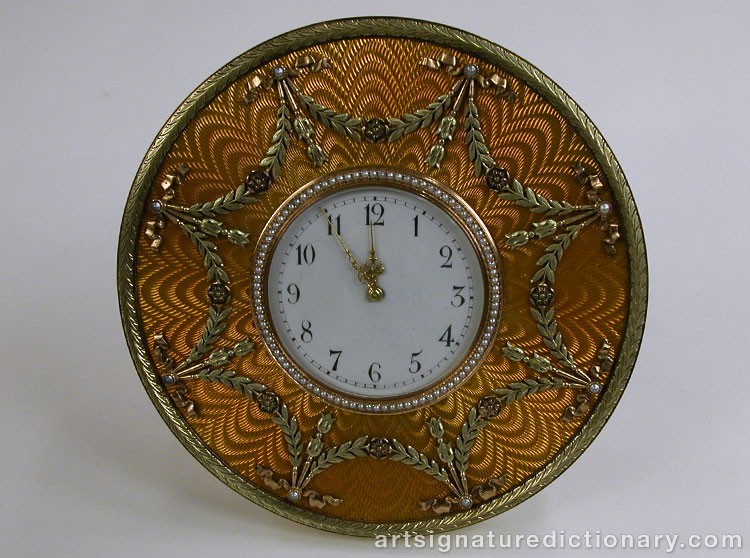
Signature proven counterfeit
Counterfeit Clock with case by the firm of Carl Fabergé. According certificate probably made 1903-1904 in St. Petersburg, Russia. Diameter 11.3 cm. Stamped Fabergé (HW) foreman Henry Wigström, St. Petersburg Assay Board 1899-1904 (Ya L) Ya-kov Lyapunov and carved inventory 9279. Watch mechanism made of HY Mo-ser & Cie. Together with two forged paintings (Robert Rafaelovich Falk and Ivan Puni Albertovich) gave Mr. ... two Fabergé-subject to a Scandinavian auction house of Internet commerce for sale. Submitter stated that he was the owner of the objects. Together, the items were valued at SEK 9.4 million. He convinced the auction house that they were authentic, which paid an advance of SEK 800.000! It turned out, at a later police hearing, that Mr… was not the owner of the objects, he had been commissioned by a close friend to sell items on his behalf but that the objects actually owned by a third person… The District Court's decision: There is an obvious risk to their re-entering the market as genuine works why they should be forfeited. NOTE: 15 April 2011, the district court's decision is challenged in the Court of Appeal to dismiss the District Court's verdict on the forfeiture. Seizure lifted and the subject should be left to the owner. (This despite the fact that the experts stated that it's a forgery).
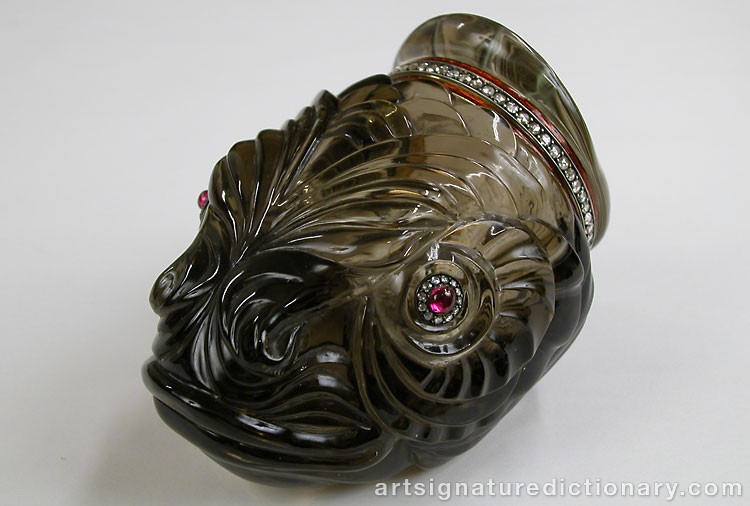
Signature proven counterfeit
Counterfeit box with a lid of the firm of Carl Fabergé in the form of a carp's head in quartz. According certificate probably made in 1904-1908 in St. Petersburg, Russia. Height 6.2 cm. Length about 8.5 cm. Stamped Fabergé, (MP), foreman Mikhail Perkhin and St. Petersburg Assay Board. Together with two forged paintings (Robert Rafaelovich Falk and Ivan Puni Albertovich) gave Mr. ... two Fabergé-subject to a Scandinavian auction of Internet commerce for sale. Submitter stated that he was the owner of the objects. Together, the items were valued at SEK 9.4 million. He convinced the auction house that they were authentic, which paid an advance of SEK 800.000! It turned out, at a later police hearing, that Mr… was not the owner of the objects, he had been commissioned by a close friend to sell items on his behalf but that the objects actually owned by a third person… The District Court's decision: There is an obvious risk to their re-entering the market as genuine works why they should be forfeited.

Signature considered genuine

Signature considered genuine

Signature considered genuine

Signature considered genuine








